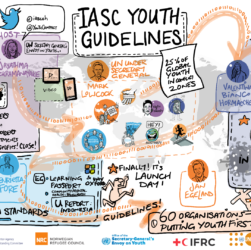

The United Nations Charter for the Rights of the Child is a significant achievement in the global effort to protect and promote children’s rights. Adopted by the United Nations General Assembly on November 20, 1989, the Charter is a legally binding agreement that sets out the fundamental rights of every child, regardless of race, gender, ethnicity, or social status.
Microlearning is a teaching and learning approach that focuses on delivering small, bite-sized pieces of information in a format that is easy to consume and retain. This approach is gaining popularity in both pedagogy and professional development for teachers. But what are the benefits of microlearning for teachers? How can it be used as an effective tool for continuing professional development?
The United Nations General Assembly adopted the United Nations Charter for the Rights of the Child in 1989. It has been ratified by every country except for the United States of America, Somalia and South Sudan. There are several reasons why the US has not signed the UN Charter for the Rights of the Child.
Bullying is a serious issue affecting many students in schools worldwide. In recent years, there has been an increasing focus on using online anonymous reporting tools to address bullying and create a safe and inclusive learning environment. This post will discuss the use of online anonymous reporting tools for anti-bullying and their potential benefits and limitations.

The United Nations Charter for the Rights of the Child is a significant achievement in the global effort to protect and promote children’s rights. Adopted by the United Nations General Assembly on November 20, 1989, the Charter is a legally binding agreement that sets out the fundamental rights of every child, regardless of race, gender, ethnicity, or social status.

The Inter-Agency Standing Committee (IASC) Guidelines are principles and standards that provide a framework for coordinating humanitarian assistance in complex emergencies. The IASC is a unique forum of the United Nations (UN) and non-UN humanitarian agencies established in 1992 to improve the effectiveness of humanitarian response in crises. The Guidelines were first published in 2005 and have been updated several times.

The Core Humanitarian Standards (CHS) is a set of principles and guidelines developed by the humanitarian sector to ensure that humanitarian assistance is provided consistently, accountable, and effectively. The CHS was developed by the Sphere Project, a collaboration of humanitarian agencies and experts, and was launched in 2014. The CHS is based on the belief that people affected by crises have the right to life with dignity and receive assistance tailored to their needs.
China urged the U.S. to ratify the United Nations (UN) Convention on the Rights of the Child (CRC) as soon as possible and take practical actions to protect children’s rights, Foreign Ministry spokesperson Mao Ning said on Thursday.